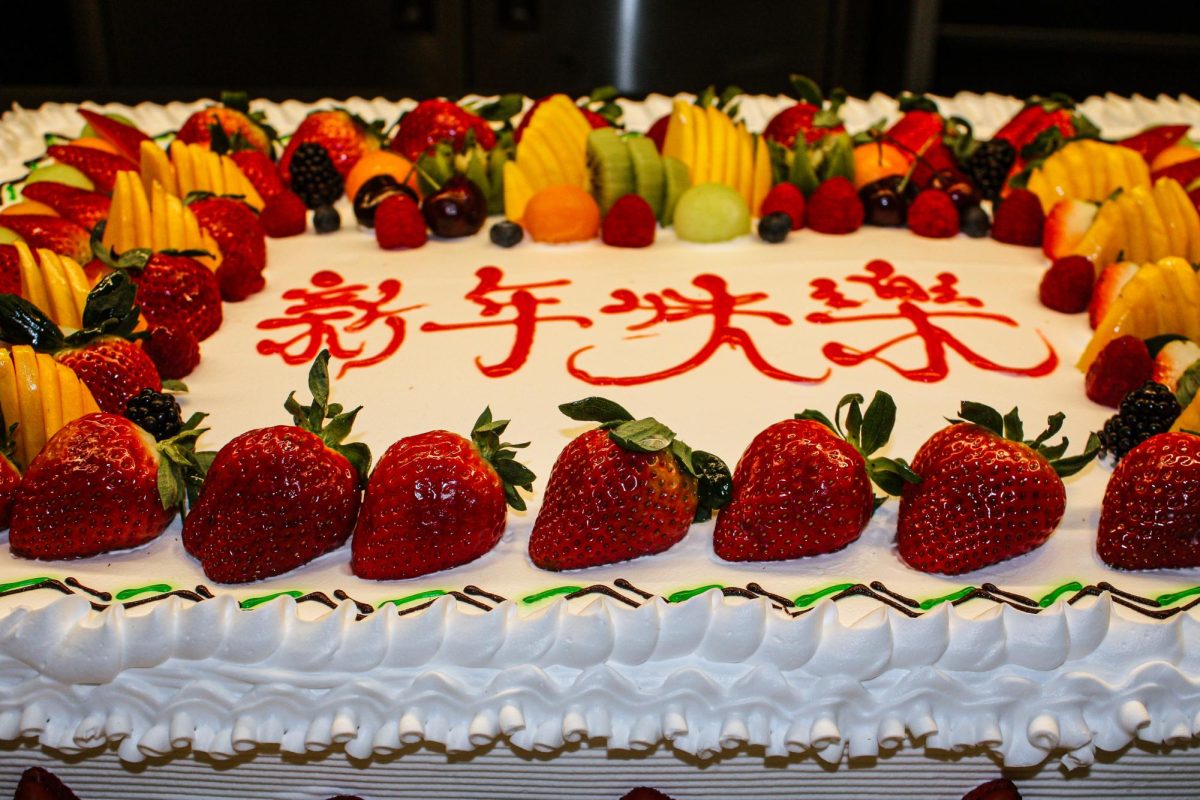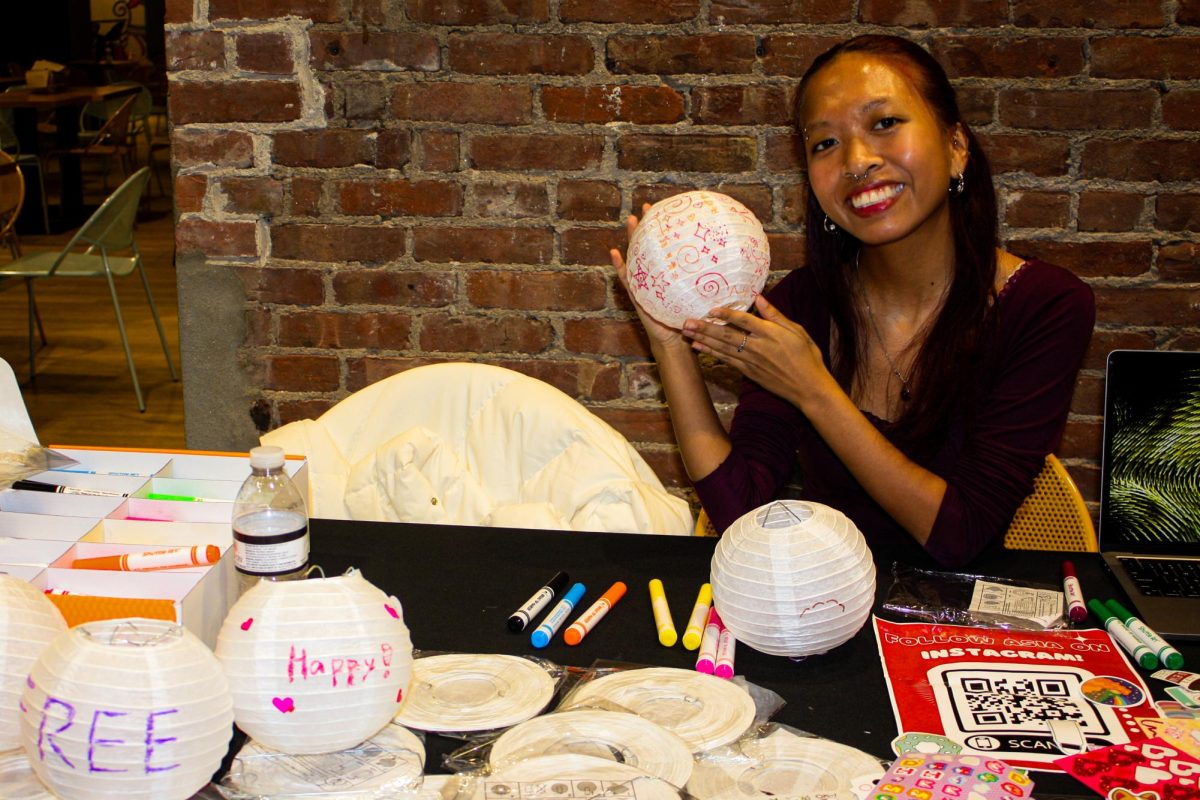Chatter and laughter filled the Dining Hall on Jan. 29 as aromas of vegetable dumplings, Taiwanese noodle soup, char siu pork ribs, and more echoed celebrations happening across the world to usher in the Lunar New Year.
A collaboration between Emerson’s Asian Students in Alliance (ASIA) and the Dining Center offered an Asian-inspired dinner menu last week to celebrate the start of the Lunar New Year alongside a space for different cultures to engage with each other through a common language: food.
“Food in any culture is a very important part of bringing together a community,” said Lily Farr, a junior media studies major and the co-president for ASIA. “Allowing food to be the focal point [for the event] and having a lot of students come in and out during the dinner time is a really important thing for visibility and awareness.”
The Lunar New Year, also known as the Spring Festival or Chinese New Year, is a two-week celebration throughout Asia marking the start of China’s historic lunisolar calendar, a calendar system based on the positions of the sun and the moon. The Lunar New Year is celebrated on the first new moon, between Jan. 21 and Feb. 20; this year it was on Jan. 29, ushering in the Year of the Snake.
Farr is from Center Valley, Pennsylvania, and said that as a Chinese adoptee in a predominantly white area, celebrating the Lunar New Year remains important to her at home and at Emerson.
“It’s a time to gather with the ones that you love and really feel a sense of community,” Farr said. “In a school set in a city, it can be really easy to feel isolated … having these small pockets of community can make it feel very heartwarming.”

Students could eat, fill red envelopes with candy, curate their own tea blends, or decorate paper lanterns in the Lion’s Den, a nod to traditional activities celebrated during the holiday.
Alexandra Bero, a freshman media studies major, and Audrey Collison, a freshman visual media arts major, said they appreciated the opportunity to engage with the Lunar New Year activities, a holiday they hadn’t celebrated before.
“I think it’s really important that Emerson is supporting their very diverse community and allowing other people of different cultures to get immersed in new cultures,” Collison said.
“It’s opening up [opportunities] for people to see the culture and food,” Bero added. “I think it’s really great that Emerson is hosting these food events in the dining hall.”
Like Emerson’s cultural center, Farr said she appreciates the Dining Center acting as a hub for cultural integration on this widely celebrated holiday.
“Having a physical space is really important for students of similar backgrounds to meet other people that look like them or share similarities with them,” said Farr. “I think it’s really important for the school to acknowledge that.”
ASIA is a student organization for community building between Asian-identifying students, although anyone is welcome to join. According to Farr, the Dining Center reached out to ASIA because “they wanted to work more closely with students for this event.”
Having come to Emerson from a high school in Okinawa, Japan, Lily Oboza, a junior writing, literature, and publishing major and co-president of ASIA, recounted her first time experiencing Emerson’s campus as a predominantly white institution.
“Everything’s different. My high school was so much more diverse than Emerson,” said Oboza. “I can count the number of Filipino people I’ve met on this campus on my hand.”

Oboza says finding a community of Asian students at Emerson has been among the most “meaningful” experiences she has had on campus.
“It opened my eyes to the fact that I wasn’t by myself, I wasn’t alone in this sea of unfamiliarity,” Oboza said.
Gracie Robles, a sophomore visual media arts major and co-communications chair of ASIA, agreed with Oboza.
“I think it’s important for Emerson to have communities like this, not just ASIA, but with all of the cultural organizations,” Robles said. “College can feel a little isolating sometimes, so it’s very important to give college students these outlets to be able to express themselves, especially when it comes to cultural things.”